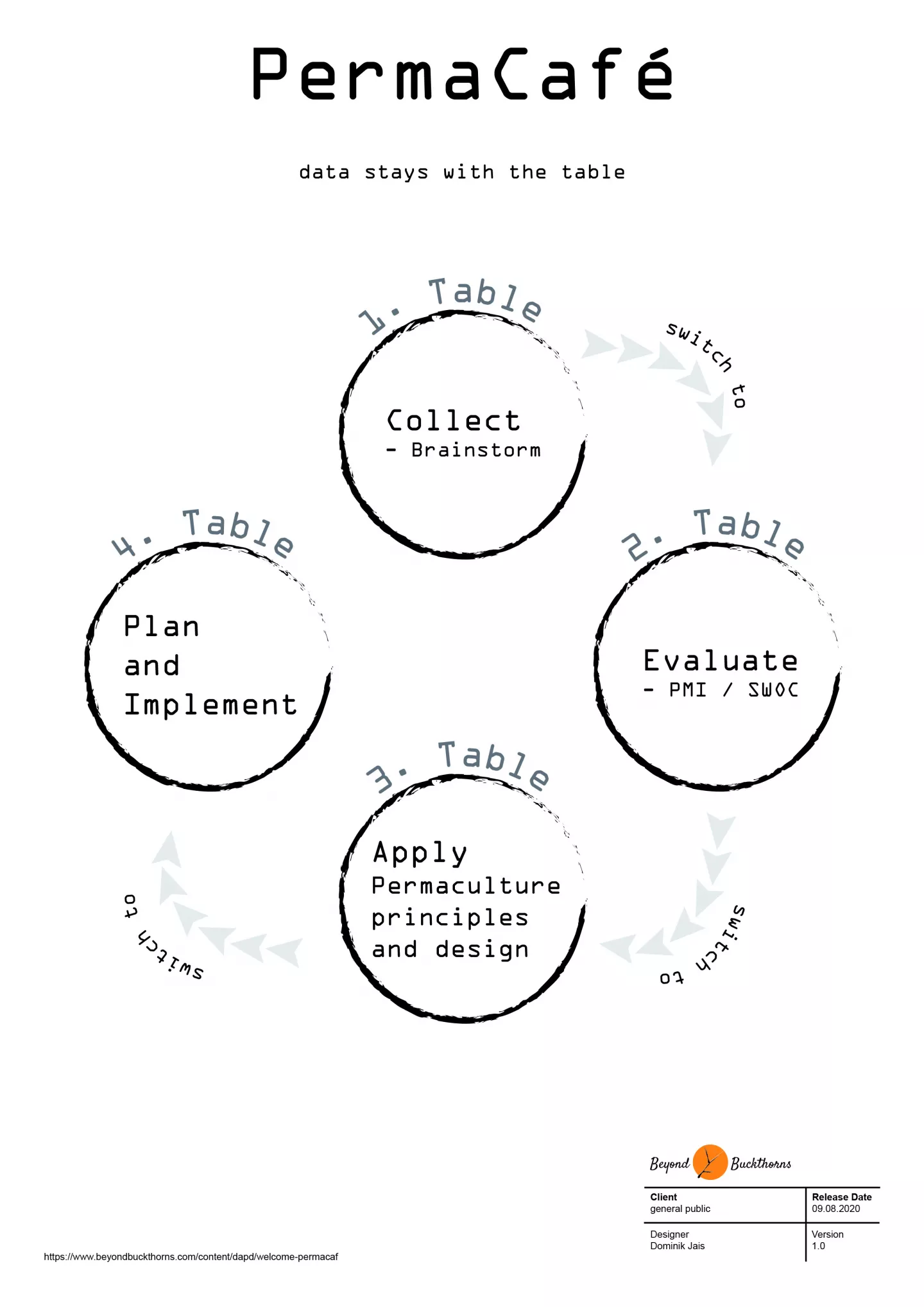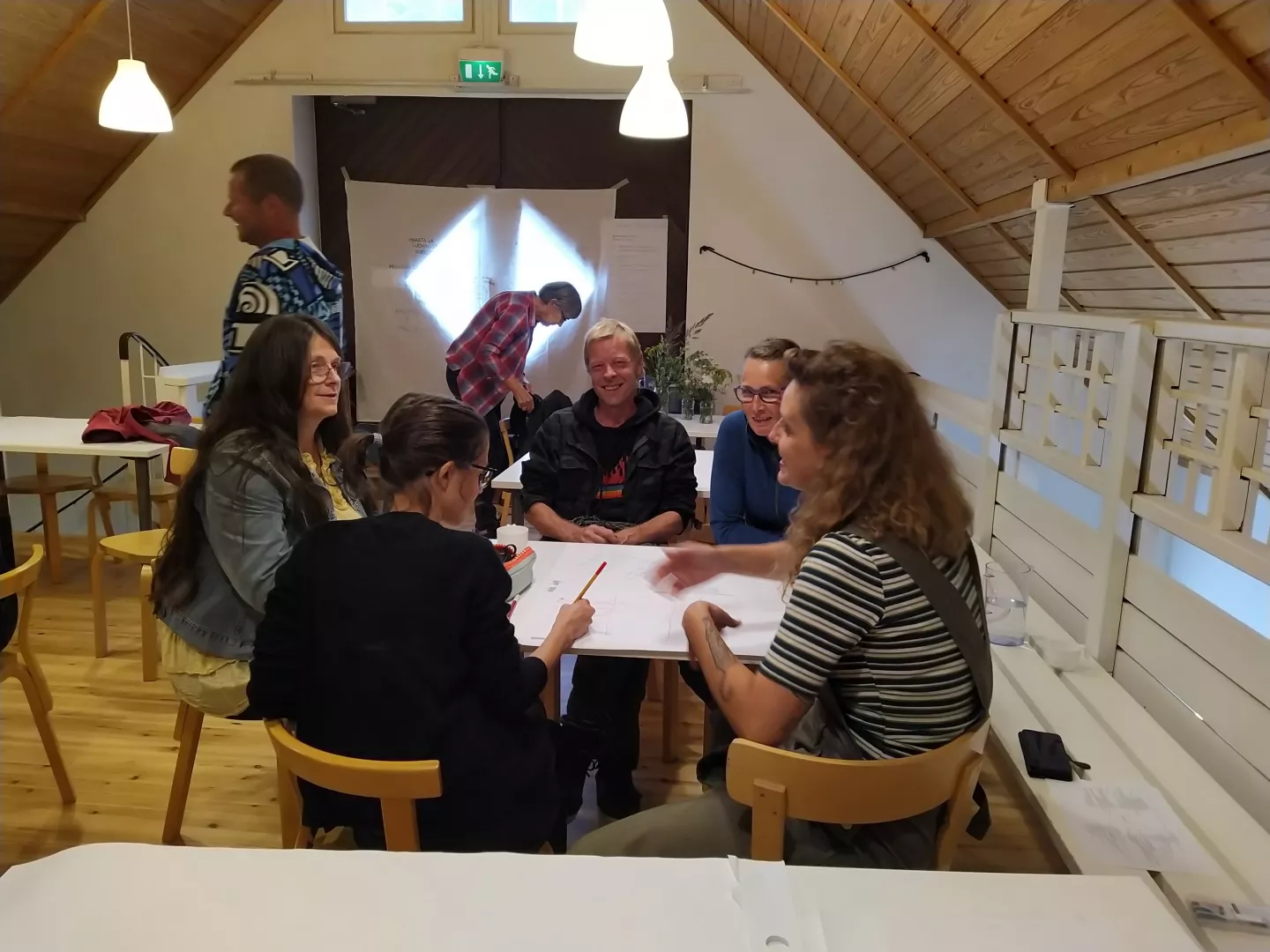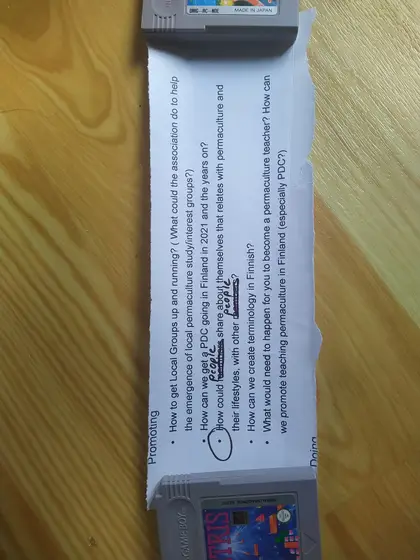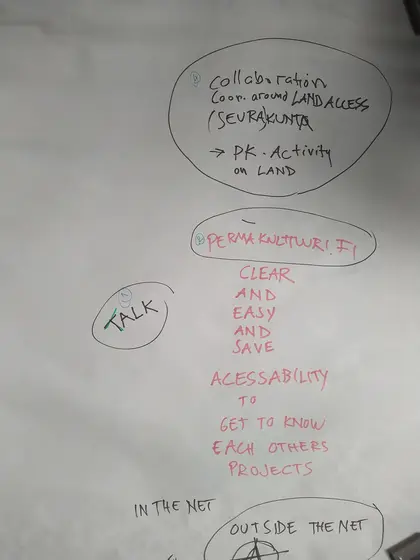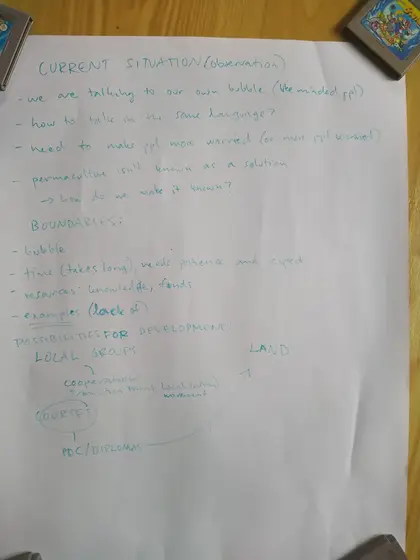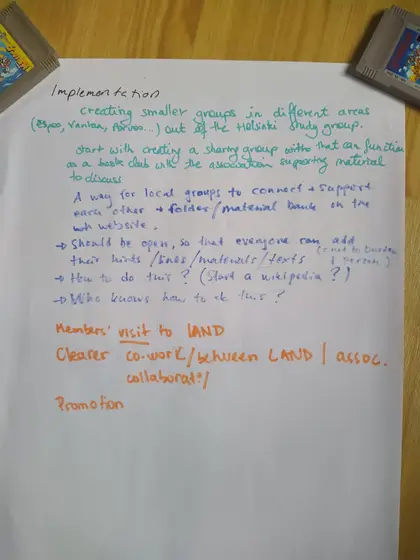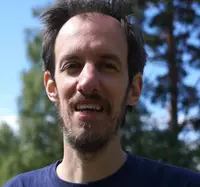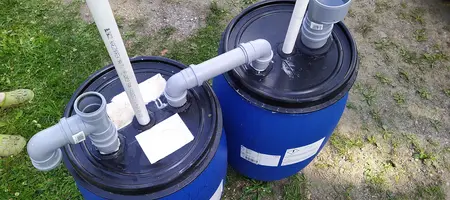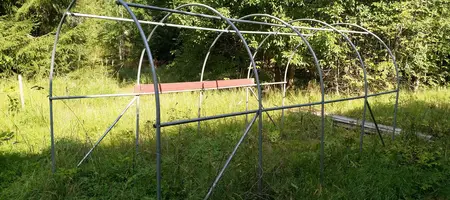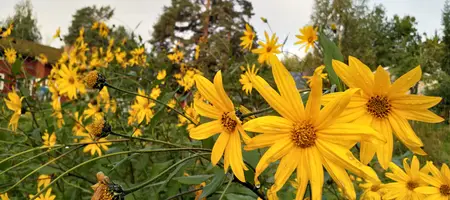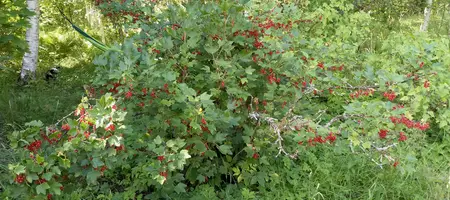Over the past years the Finnish permaculture association used all kinds of different tools and processes to get members involved and on a global scale each year new ones gets developed and introduced, like for example the Future Workshop, which the association hasn't tried yet.
The following design used permaculture ethics and principles to introduce a new social design tool called PermaCafé.
----------------
----------------
Goals
The goals for this design are according the permaculture ethics:
Earth care is achieved by disseminating permaculture ethics and principles and even the design processes so that people can take care for the planet.
People care is achieved by letting people not alone step through unfamiliar territory. Or what would you do if you suddenly end up on planet Vormir? The goal is also to bring people together and teach a design process quickly.
Fair Share is the free dissemination of this design to be used by other associations. I'd like to hear about your adaption of course!
Introducing CEAP
I'm going to use the CEAP design process for this design. This is the first time I'm documenting the use of this process. CEAP is actually pretty simple:
- Collect data
- Evaluate
- Apply Permaculture principles and design
- Plan and Implement
Adapting CEAP
In order to close the learning cycle it is necessary to add an additional evaluation & reflection step at the end.
Therefore the tweaked process is called CEAPER. (Reflection closes the Kolb learning cycle)
- Collect data
- Evaluate
- Apply Permaculture principles and design
- Plan and Implement
- Evaluate outcome
- Reflect
As this is not such a big change to the process and I made it up on the fly I couldn't write it down in its own design.
Following the process
Collect
The tools the Finnish Permaculture association used during their meetings:
- Worldcafe
- OpenSpace
- Brainstorming
The design processes I used so far:
- Obredim / Obr3dim
- Looby's design web
- PDCA
Additional information
- The Finnish Permaculture association needs to hold 2 general assemblies a year. Sometimes they get combined with a Permaculture events, sometimes they are a standalone event. This year, 2020, there was an additional summer event planned. During an organization meeting one of the organizers expressed their interest in running the Worldcafé again.
- The given time was estimated to be enough to create something special.
- During a mail exchange Cathrine Dolleris mentioned the CEAP design processes.
Evaluate
With some help from Lumia I evaluated the different tools we used so far
PMI
PMI is short for PLUS, MINUS, INTERESTING. It is a simple evaluation tool which helps me to get a clearer picture of my observations.
Design Processes
| Obredim | ||
| Plus | Minus | Interesting |
| simple enough processes | sequence doesn't reflect the real usage of it | adaptable |
| widely used, documented and understood | often taught during PDC |
| Loobys Web | ||
| Plus | Minus | Interesting |
| flexible | sometimes confusing | once taught people like it |
| reflects reality | not that widely adapted | mostly used for social design |
| CEAP | ||
| Plus | Minus | Interesting |
| simple | missing an evaluation step -> teaching circle is not closed | short sequence |
| easy to understand |
Tools
| Worldcafe | ||
| Plus | Minus | Interesting |
| Easy to set up | doesn't end with action list | is fun most of the time |
| Easy to follow through | drill down deep into topics isn't that possible | people of different knowledge can be part |
| Structure can be bend end amended | ||
| Flexible |
| OpenSpace | ||
| Plus | Minus | Interesting |
| Rigidg framework | Rigid framework | Known by many |
| Simple rules | Change of rules is difficult | People of different knowledge can be part |
| Allows a lot of different things inside of it | Can be chaotic | |
| Easy to use |
| Brainstorming | ||
| Plus | Minus | Interesting |
| works for a given topic | failure prone since it has to be clear for everyone to not valuate | Useful as an initial stage that feeds into something else |
| brings up results | it often brings the same results over and over again if the same people brainstorm |
I put what I got from the PMI and run a SWOC analysis with it. Using both tools helps to clarify further.
SWOC
I first ran a SWOC from my personal perspective. The SWOC analysis below shows the tools and design processes from the PMI
| Strength | Weakness |
| Worldcafé | OpenSpace |
| Obredim | |
| Brainstorming | |
| Opportunity | Challenges |
| Looby‘s Web | Whitfield |
| CEAP |
I also run a SWOC from an associations perspective. It puts findings from years of observation during my time in the Finnish permaculture association into SWOC.
| Strength | Weakness |
| trying different tools | same tools over and over again |
| members | not using Permaculture design |
| single purpose | afraid leaders |
| fragmented players | |
| Opportunity | Challanges |
| permaculture tools | Get it to work over time |
In the beginning I already set some goals using the Permaculture ethics. It's now time to craft them into a SMART goal.
Apply Permaculture principles and design
One of my most loved principles is "multiple functions per element".
From the analysis my most favorite one is the Worldcafe because it is really easy, already uses or could use Brainstorming and it is flexible enough. I’m also in favor of CEAP since it is simple, easy to understand and an opportunity. My chosen combination is therefore Worldcafe with CEAP. The Worldcafe will be used not only as a communication and a collaboration tool but also as a teaching tool (multiple functions per element). And what would be better to teach than a Permaculture topic: the design processes (multiple functions per element). CEAP is an ideal candidate because of its short sequence and because it is easy to understand. It might not be the best for social design but we need a starting point and the less steps it takes the easier it is, especially for beginners. Since I will deploy it for the first time during the summer event of Finnish Permaculture Association there will be a social edge – people interested in Permaculture but without any experience or knowledge. This also ads to diversity (use and value diversity) since during an event there are people of different backgrounds, different education, etc. or as Bill Mollison put it: "Everything gardens". During the process there is need for writing. Pencils might be better than felt pen (use biological resources). Since at the end all data (energy) will be collected (stored) - we will collect and store energy. We might even talk about small scale intensive system since a defined number of people (limited to max 50 due to Corona) are working over time very intensively on a topic.
Worldcafe + Permaculture Design Process = PermaCafé
since it is an amalgamation of two different subjects the name should reflect on it.
Sequence
The proposed sequence for a PermaCafé that runs on the CEAP process will be like this:
- Collect data
- people at the table brainstorm or discuss a given topic
- Evaluate data
- using PMI or SWOC to evaluate – Over time we might find other evaluation methods. It depends.
- Apply Permaculture principles and design
- pick from the evaluated topics and design with the permaculture ethics & principles
- Plan and implement
- create an actionable plan, something that can be executed
The image can be downloaded as a printable A4 PDF at the end of this design.
Prerequisites
- One host at every table. Experience with permaculture design would be good as the 3rd step, the actual design step can be difficult, especially if the topic is not land but social
- Visual helps, like for example printed list of the permaculture principles (especially if working with people that have no experience)
- Pens & Paper
- Someone who transfers the analog into the digital world at the end (only needed if multiple persons from different location continue work)
Is it SMART?
Let's see if a PermaCafé is a SMART goal. Below are the SMART criteria and their definition according to Wikipedia:
Specific – target a specific area for improvement.
Measurable – quantify or at least suggest an indicator of progress.
Assignable – specify who will do it.
Realistic – state what results can realistically be achieved, given available resources.
Time-related – specify when the result(s) can be achieved.
Specific: The area of improvement is a structured conversational process.
Progress: is indicated by feedback and quality of data received.
Assignable: It is pretty clear who will run the PermaCafé: The Finnish Permaculture association's event creator & hosts.
Realistic: yes, the process can be implemented
Time-related: first time delivered on the 27.07.2020
Plan and implement
The example described during the previous step was implemented during the Summer meeting of the Finnish Permaculture Association. In order to see the different stage I sat with different hosts and followed the topic. At the first stage I used picture forming from sociocracy to help the stuck brainstorming go forward. At the second stage table I just kept quiet and wrote. At the third stage I gave an example for a starting point of a design using the "multiple functions per element" principle. At the fourth stage I commented on a suggested action plan's first step.
Implementation Example
For the summer meeting of the Finnish Permaculture Association I first pitched the idea to the event organizers. It was fast taken on and accepted. I then put it into my presentation about the association as the last slide ending the presentation on a high note and giving some ideas what will later happen.
- Number of hosts 4 (n) defines table. Each table gets a number
- The hosts first checked the number of registered participants (x) and then divided that number by hosts (n) available. Which resulted in about 6 (z) person per table.
- The tables got prepared and all material got divided
- Hosts explained process to all participants
- Participants got divided into groups by letting them count to 4 (n)
- Process get started at every table by letting the participants introduce themselves (if no prior introduction happened)
- Questions about topic gets introduced -> participants start brainstorming / discussion without evaluating
- After 20 (x) minutes the group switches table to the next table
- Now every group is on a new table evaluating the brainstormed items of the previous group
- After 20 (x) minutes the group switches table to the next table
- Now every group is on a new table starting to design with the items that have been found positive (PMI) or considered an opportunity (SWOC)
- After 20 (y) minutes (probably here is more time needed) the group switches table to the next table
- At the final stage the group creates an action plan out of the design, something that really can be done
- After every group has finished after 20 (x) there is a presentation about the findings
- Applause!
Evaluation
After the implementation run and the presentation was finished at the 2020 summer meeting some of the participants gave feedback:
Participants feedback
"Interesting process, total fun to participate"
"Great experience"
"Chaotic but fun"
"My brain is filled up with so much info.."
Own evaluation
Plus
- teaches a simple permaculture design process while doing something else
- allows to go very deep down into a topic
- makes social permaculture tangible
- makes permaculture design accessible to a wider audience
Minus
- needs more knowledge than a Worldcafe / Brainstorming / OpenSpace
- needs more preparation than a Worldcafe
Interesting
- participants liked it
Evaluation from the organization team
The organization team also functioned as hosts. They evaluated the PermaCafé as well first using debrief technique.
What was worst?
- no pauses in between
- not feeling confident about the process and how to lead a group of people who are not familiar with permaculture at all
- recurrent need of pulling in all the aspects of the permacafe
- no check-in or introduction
What was best?
- the way of self-learning, the coolest dive-in in all types of learning
- professional input, very ambitious, interesting way of finding solutions
- chaotic-ness of it all -> very little lead to something great
- people dove right into it without hesitation
- Practice in active listening
- feeling of team work between the participants
- seeing the different inputs between the tables
- the outcome
- seeing people working together even without knowing each other -> permies go deep and wide real quick
What would you change?
- much more time for process
- make sure for people to get to know each other
- put in a break in between
- PermaCafé practice among the facilitators before “live”
- make sure there is at least one person who knows a bit more about permaculture (facilitator should know some designing)
- more clarification for the organizers about the process
- we can plan better the last part, the presentations, to get they participating in that part as well
- notes should be written legible :D
Reflection
Innovation usually takes time but it needs someone to do it. When Rob Hopkins let his students apply Permaculture onto the concepts of peak oil, "transition town" got born. Applying permaculture, its ethics and principles onto processes can enhance the experience and result in far deeper / better results dependent on how the process got tweaked. I'm not a professor at a University with a lot of students at his disposal like Hopkins, but thanks to the Finnish Permaculture association I got a glimpse of how easy innovation is when there is access to a group of people and you have one sacrificing the current status of tools and tries something new.
The hosts are a crucial part and I think that more instruction is needed. I have to better communicate the idea and the process and give more time. I find it sometimes difficult to put all my ideas into words and text. Some of the crucial thought steps and processes get lost along the line. I can’t always convey all my thoughts.
In my experience every process can, and should be tweaked in order to reflect reality. CEAPER makes much more sens to me than CEAP. I'm not sure if others will see it that way as well but evaluation / reflection is an integral part of learning. With every design I want to get better and get a wider understanding of the topic I'm researching or working on. I hope that CEAPER finds its way into the Permaculture world – as well as the PermaCafé. At least I will use it! But please "do try this at your association" - and give feedback!
And what I really liked was getting two things done in one design: multiple functions per element! I also like that the goals got met. We have Earth care, People care and Fair share in place. The Finnish Permaculture association has already started working on some of the points found.
| Attachment | Size |
|---|---|
| PermaCafé cylce | 513.32 KB |




